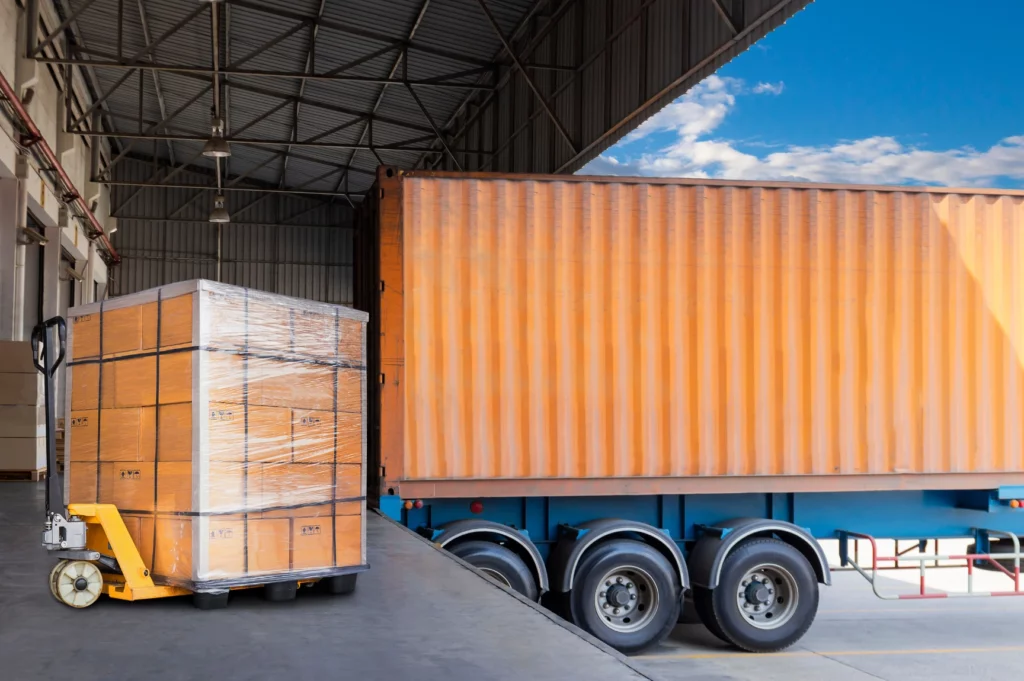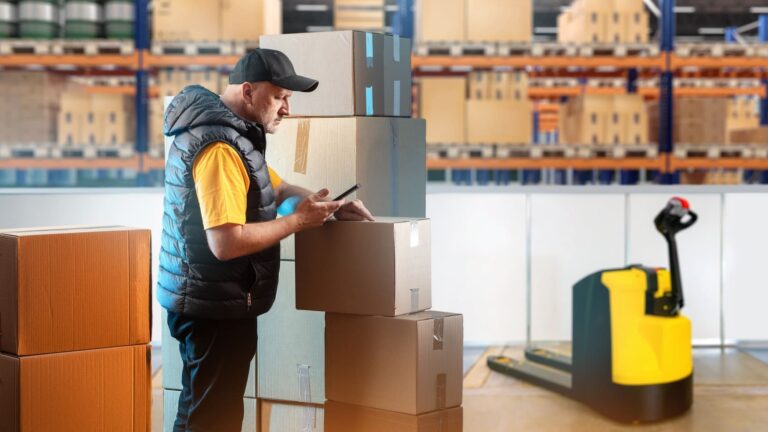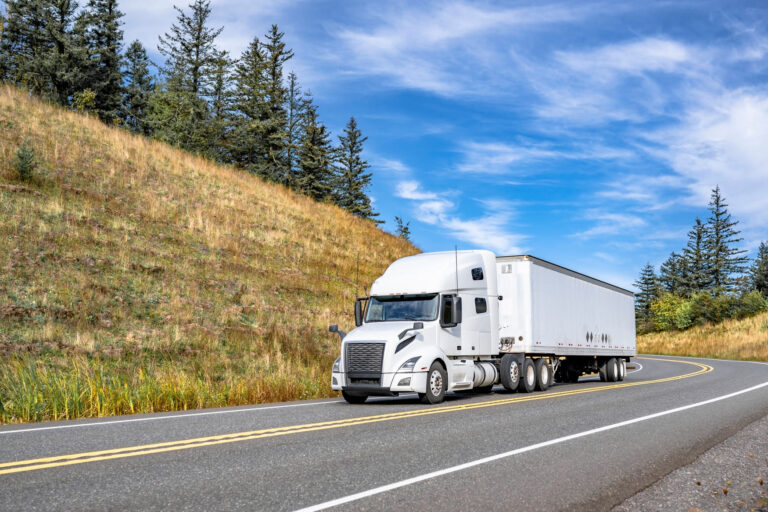What Is Transloading? (Meaning & Process Explained)

Transloading means moving freight between different modes of transportation, for example, unloading goods from a ship’s container and loading them onto a freight train or truck. In practice, transloading allows importers, exporters and freight forwarders to mix and match trucks, trains, ships or planes so each leg of the journey uses the most efficient mode. Put simply, transloading is the process of transferring cargo from one vehicle or container to another during shipment to optimize cost and speed.
Many global shippers rely on transloading to bridge gaps in the supply chain. For example, cargo shipped from a factory overseas may arrive at a port by ocean vessel, then get transloaded onto railcars for the inland haul and finally onto trucks for final delivery. This flexible handling of goods – using specialized transloading services – can dramatically reduce transit costs and shorten delivery times.
How Transloading Works (Step by Step)
Transloading typically takes place at a transloading facility (also called a transload center or cargo transfer hub) located near ports, rail yards or major highways. These facilities are equipped with forklifts, cranes, conveyors, and storage areas to unload, sort and reload shipments. A typical transloading process involves the following steps:
- Arrival: A shipment arrives at a transloading facility by one mode (e.g. a truck delivers a container, or goods arrive by ship or rail).
- Unloading: The cargo is taken off its original vehicle or container using forklifts, cranes or conveyors. At this stage, workers inspect goods for damage and prepare them for the next steps.
- Sorting/Consolidation: Shipments are organized by destination, product type or customer. At some transload hubs, items from multiple incoming shipments are consolidated into larger loads, which lowers handling costs per unit. Sorting also ensures each item is correctly matched to its next mode of transport.
- Reloading: The goods are then loaded onto the next mode of transportation. For example, pallets may be lifted into rail cars, or heavy items moved onto a truck. Specialized equipment (like cranes for machinery or conveyors for bulk materials) is used as needed.
- Departure: Once loaded, the shipment continues on the most efficient route toward its destination (by truck, train, ship or a combination thereof).
Each step is performed by trained logistics personnel to ensure safety and speed. By matching modes (e.g. rail for long haul, truck for local delivery), transloading keeps cargo moving smoothly across supply chains.
Key Benefits of Transloading
Transloading offers several advantages for import/export companies and freight forwarders. These include:
- Lower Transportation Costs: Shifting long-distance legs to rail or ocean shipping can greatly cut costs. For instance, trains are up to 3–4 times more fuel-efficient than trucks, and one railcar can carry the same volume as 3–4 truckloads. Using transloading to take advantage of rail or sea freight can reduce the cost per mile compared to trucking the entire route.
- Consolidation & Efficiency: Transloading hubs consolidate cargo from multiple suppliers. Combining less-than-truckload (LTL) shipments into a single train or shipload lowers handling and shipping costs. This economy of scale makes it cheaper per item to move smaller or bulk goods across long distances.
- Expanded Reach: By transloading, companies gain access to broader rail and shipping networks without needing their own private tracks. A single company can leverage hundreds of transload facilities across North America (and beyond) to reach distant markets affordably. For example, transloading networks in Mexico and the U.S. allow seamless border crossings by moving goods onto railcars for the northbound leg.
- Flexibility & Resilience: Transloading provides routing flexibility. Shippers can choose alternate routes or modes if disruptions occur (e.g. port congestion, labor strikes, severe weather). If a primary route is blocked, goods can be rerouted onto a different mode at a transloading site to avoid delays. This adaptability helps keep supply chains moving smoothly under changing conditions.
- No Infrastructure Investment: Companies don’t need to build rail sidings or invest in expensive equipment. Transload terminals already have the rails, cranes, forklifts and warehouses needed. In effect, any shipper or receiver can utilize cost-effective rail transport “without having to own the track” – all handling is done at the transloading facility.
- Scalability: Railroads have large capacity to accommodate growing volumes. Transloading lets businesses scale up shipments easily; as demand grows, additional railcars or vessels can be added without major retooling of the supply chain.
- Expert Logistics Support: Many freight forwarders and third-party logistics (3PL) providers partner with vetted transloading operators. This means expert teams handle the transfer smoothly, ensuring compliance, proper labeling and safe handling. Forwarders gain confidence knowing their cargo is managed by experienced professionals at every transload facility.
Transloading facilities can handle a wide range of cargo – from consumer goods and construction materials to liquids and machinery.
Transloading Services and Facilities
A transloading facility (or terminal) is a dedicated warehouse or rail yard designed for these transfers. Key features of a typical transload facility include:
- Ample Space: Large flat yards to accommodate trucks, railcars and storage. Facilities often have room to temporarily park vehicles and store goods during transfer.
- Intermodal Access: Direct connections to major interstates, rail lines and sometimes ports. Easy highway or rail access speeds up the movement of goods in and out of the facility.
- Specialized Equipment: Cranes, forklifts, conveyor belts and other machinery to handle all cargo types. For example, cranes move heavy containers or steel beams, forklifts lift palletized goods, and loaders/conveyors handle bulk commodities like sand or grain.
- Storage and Staging Areas: Space to buffer cargo between modes. Goods can be consolidated or sorted here before final loading. Staging yards often serve as temporary holding points during the transfer process.
- Value-Added Services: Some transload providers offer cross-docking, repackaging, palletizing or light assembly services. This means they can repack cargo or break pallets if needed to meet final delivery requirements.
Transloading services typically include unloading the incoming shipment, warehousing (if needed), sorting/consolidation, and loading the shipment onto the outbound carrier. In practice, a freight forwarder might book a transloading service so that, say, containers from a ship are emptied and reloaded onto rail cars by the facility operator. This “one-stop” service saves shippers from coordinating each detail themselves.
Why Importers and Freight Forwarders Rely on Transloading
Import/export companies and freight forwarders use transloading to streamline complex shipments. For instance, an importer bringing goods from Asia might unload ocean containers at a West Coast port and transload them into railcars bound for inland distribution, thereby cutting domestic trucking costs. Similarly, a freight forwarder managing U.S.–Mexico trade can use a rail-to-rail transload at the border to avoid customs delays while switching from a U.S. rail carrier to a Mexican one.
By working with transloading facilities, forwarders can design optimal routes for their clients’ cargo – choosing the fastest or cheapest mode for each segment. Many 3PLs will arrange multistep trips (ocean + rail + truck) behind the scenes. This means importers/exporters get the benefits of multimodal shipping (cost efficiency, flexibility) without needing to manage every transfer.
Conclusion
Transloading is a powerful logistics tool for global supply chains. By transferring goods between trucks, trains, ships or planes at specialized transload facilities, companies reduce shipping costs, improve flexibility and expand their reach. For freight forwarders and import/export businesses, transloading services streamline shipments that cross borders or span continents. Modern transload hubs – with their cranes, forklifts and storage yards – make it easy to move nearly any type of cargo from one mode to another.
You may be interested in

The Impact of E-Commerce on Warehousing: How Online Shopping Is Redefining Storage and Fulfillment
The explosive growth of e-commerce has transformed how consumers shop — and how businesses store, manage, and deliver products. With customers expecting faster delivery, real-time tracking, and convenient return options, ecommerce warehousing has become the cornerstone of modern retail. The impact of e-commerce on warehousing extends far beyond additional storage needs; it is reshaping supply […]

Warehouse for Small Businesses: Top Fulfillment Services for Startups & Growing Brands
For small businesses and startups, efficient order fulfillment is critical to scalable growth. Instead of leasing expensive warehouse space or handling shipping in-house, partnering with a small business fulfillment center or using order fulfillment services for small businesses can save money and simplify operations. In this guide, we’ll explain why warehousing and fulfillment services matter […]

Hidden Logistics Costs in E-Commerce: Surprises and Tips
Online retailers often focus on base shipping rates and warehouse fees, but e-commerce logistics costs include many hidden charges. For example, fuel surcharges and peak-season fees vary with oil prices and demand. Port and handling fees (Terminal Handling Charges) can add $50–$200+ per container. Other fees like detention, last-mile tolls, and currency conversion may quietly […]
Ready to streamline your warehousing needs?
Request a quote today and discover how OLIMP's tailored solutions can optimize your operations